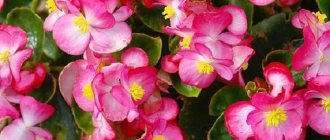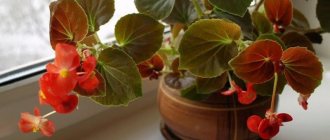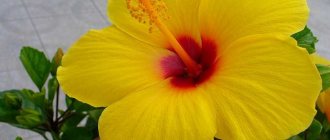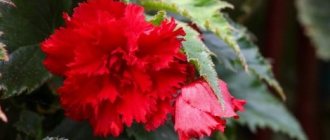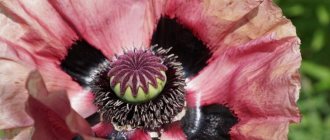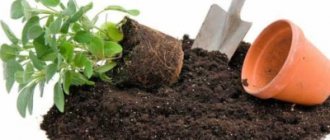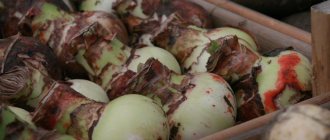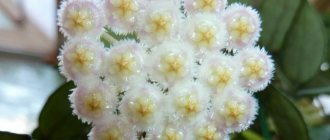Begonia - flower features
The leaves have an asymmetrical beveled appearance. They can be whole or cut into several pieces with soft or jagged edges. For most, the side of the leaf facing the ground is dominated by various shades of red and purple. Flower collectors who love to grow unusual houseplants are especially sensitive to specimens decorated with geometric patterns, strokes, and dots. In some species, the surface of the stem and leaf is fluffy and soft due to many small villi. Strong and dense stems protect against pests and other mechanical damage. The fruit of begonia is a capsule, the seeds are very small. How begonia reproduces is described in the scientific works of reputable scientists.
About diseases and pests
If you follow all the above simple rules of breeding and growing, begonia will be beautiful and healthy. The occurrence of any problems is a consequence of violation of the content rules, the causes of which are easy to detect and eliminate:
- when the soil dries out, the leaves will dry out;
- if overmoistened, the stems will rot;
- bright sun rays will cause white burns;
- falling of flowers and leaves is a consequence of hypothermia;
- with a lack of feeding, begonia becomes small both in terms of leaf blades and buds.
Like most gardening plants, tuberous begonias are prone to pests such as aphids, spider mites, scale insects and thrips. All of them are expelled with the help of insecticides.
When problems with humidity or light occur, spots and plaque may appear on the leaves due to diseases such as powdery mildew or gray mold. In this case, it is necessary to resort to spraying with fungicides with benomyl.
The unpretentiousness and excellent decorative properties of begonia are good indicators for starting cultivation in any garden, plot or home.
In order to grow this queen, you do not need to be a landscape designer or have extensive gardening experience, you just need to love and cherish a flower. Care and all energy costs will return with unparalleled beauty and abundance of flowering.
Classification of begonias according to various characteristics
Scientists have not agreed on the systematization of plants by characteristics, and in English and domestic sources there is an absolutely diverse division by type. What is important for flower growers to know is that the care for these plants and the conditions for their cultivation are the same and may differ only slightly:
- decorative deciduous begonias;
- bush begonias;
- tuberous begonias;
- beautiful flowering begonias.
Decorative deciduous begonias
The usual stem is absent, and elongated, flowing leaves begin to grow directly from the branched root. They are valued for the beauty of their leaves, which have a variety of shapes and colors. Olive-green, brown-pink, purple, violet, dark gray, with a silver coating and a cuff of fibers - a wide range of colors to suit every taste for connoisseurs of house plants. It is worth noting the propagation of begonia by leaf as the simplest way to add this flower to your collection of green friends.
Representatives:
- royal begonia;
- Metallica;
- brindle or Bauer.
Shrub begonias
It differs from the previous species in size and densely growing needle-like branches. The exquisite and sophisticated inflorescences of this plant become the main decoration of garden flower beds around a dacha or country house. The root is reduced into a tuber without division into small segments. Bush from 15 cm to 180 cm. They can be annual, when the life cycle takes place in the shortest possible time within one year, as well as perennial, requiring transplantation into containers, since a drop in temperature can cost them their lives.
Popular among flower growers are:
- coral begonia;
- fuchsia.
Tuberous begonias
Due to the tubers, the plant calmly survives low temperatures and dry summer periods. Thanks to the root, the flowering period of begonia is long and can vary from four months to six months. Representatives of the species are herbaceous, shrubby and hanging. The color of the leaf cannot boast of variety and usually contains all shades of green.
Care
Pot
Choose a pot for planting that is shallow but wide (3-4 cm wider than the previous one). Planting is carried out in the spring - at this time the begonia will take root better. Give preference to a clay pot: plastic ones get very hot, plaster and glass ones do not allow air to pass through properly. Clay provides good air circulation and does not retain moisture.
Location and lighting
Tuberous begonia grows equally well both in a well-lit place and in partial shade. However, avoid extremes! Partial shade does not mean the darkest corner in the apartment, and the illuminated area does not equal full sun. An east window works well, but protect the flower from drafts.
In many plant care manuals, it is recommended to turn the flower pot alternately with one side or the other side towards the light. This is done so that the plant does not grow crooked. This advice is not suitable for begonia: it does not like to be disturbed and will immediately begin to drop its buds.
Watering and air humidity
Watering should be sufficient and frequent, but in moderation: do not allow a swamp to form in the pot !
In between procedures, the soil should dry out by 1-1.5 cm. Cold water is dangerous - it causes tender roots to rot. Therefore, be sure to pre-settle the liquid to remove chlorine and harmful substances, and warm it to room temperature. Tuberous begonia should be watered in the morning.
The air humidity in the room should be slightly increased, but there is no need to spray the plant often - droplets of moisture can leave unpleasant-looking spots on the leaves. Find another way to humidify the air: you can, for example, place a saucer with wet moss near the pot and add water to it from time to time, or buy a household humidifier.
Temperature
Specimens growing in the house require a temperature within +18 – +23 degrees during the active growing season , and in winter – no lower than +15.
Top dressing
Regarding feeding: everything is simple. Once before flowering (this is especially recommended for early planting), apply fertilizer with a high nitrogen content - it will slow down flowering and give the command to the leaves to grow more actively. The rest of the time - with the beginning of flowering - feed 2 times a month with any complex for flowering plants.
Transfer
Replant in the spring, before sprouts appear.
Remove the tuber from the pot, inspect for damage (cut off rotten and dried roots with a disinfected blade, as well as areas on the tuber), keep it in a pale pink solution of potassium permanganate for half an hour and plant it in a new pot with fresh soil.
Remember: the tuber cannot be completely covered , but just sprinkle the roots a little on top.
Priming
Begonia does not have any special requirements for soil. Buy a universal mixture at a gardening store, or mix sand, peat, humus and leaf soil in equal parts. Don’t forget to heat the mixture in the oven before planting (30 minutes at 90 degrees). Drainage - broken brick or expanded clay.
Trimming
Formative pruning is carried out at the request of the flower owner, but it is not obligatory.
How to preserve in winter?
The dormant period of tuberous begonia begins in November and lasts until the end of February. The shoots die, the leaves fall off - a generally unpleasant sight. But there is still one “plus” - the tuber remains, and if you save it, your flower will soon return to you .
Clean the soil from the tuber, trim the roots, place in a cool (not higher than +15 degrees) and dry place. However, the tuber can be left in the pot and placed directly in the container in a cool, dry corner. Watering at this time is minimal: 2 times is enough.
Begonia growing in the garden should not be left in the ground. As soon as its leaves and shoots die, dig it up and place it for the winter until February.
General information on how garden begonia propagates
You can always find an option to preserve and increase the number of begonias; we will consider how to propagate it further.
Note! Begonia should absolutely not be left to overwinter in a flower bed. The delicate plant will not tolerate a drop in temperature.
In order to enjoy tuberous begonia, which can be propagated in 4 ways, for as long as possible, you need to know the rules of transplantation and propagation.
You can reproduce in the following ways:
- vegetative;
- seeds;
- tubers;
- leaf or stem shoots.
Begonia propagation by seeds
Spring is the most comfortable time of year to germinate begonias, and then you will get abundant flowering with the onset of autumn. The plant is very light-loving. The sown seeds do not need to be covered with soil; they must germinate in the light. To sow seeds, you can take any plastic container. The soil must be well sifted; for this, a production sieve is used.
Note! If you are not sure of the quality of your soil substrate, you can spill it with potassium permanganate. This should only be done after you have wet it with water.
To make propagation comfortable for the begonia flower, you should pay attention to some aspects. Infected crops do not allow individual plants to form and they are stunted in growth. With the correct concentration of seeds, about 300 units can be grown in a small 15x20 cm container. When sowing is completed, cover the container with a transparent lid and place it in a bright place.
Begonia germinates in about 14 days. Do not allow the soil to dry out or become waterlogged; use a spray bottle for watering. Comfortable temperature at the first stage of germination is +20-22 ℃, it is advisable to maintain it throughout the day. After the first shoots, the temperature can be reduced. Next, we’ll look at when and how to plant begonias. We do this when not the first cotyledon leaves appear, but when one or two pairs of real leaves, similar to adults, are formed. We begin to plant the sprouts in separate pots.
When is the best time to plant?
To ensure flower propagation continues throughout the season, you can use the seedling method. At home, they sow seeds in the soil and wait until sprouts appear.
Usually sowing lasts from the end of January and can continue until April. The correct time is calculated depending on the characteristics of the begonia development cycle. In order for the flower to bloom early, it is recommended to plant the seeds in winter. At this moment, the plant’s roots will actively develop and it will be able to adapt to new conditions.
If you sow ever-flowering begonia early, then by the time of transplanting the seedlings will become overgrown. Such plants will have difficulty taking root and will lose their decorative qualities. If the flowering time comes very early, then the number of flowers will become smaller. Therefore, it is better to sow such begonia in February.
Tuberous flower seeds should be planted even earlier, until mid-January arrives. Then the plant will have leaves and buds.
Propagation of flowers by cuttings
Step-by-step instructions on how to root begonia cuttings.
How to cut and prepare cuttings
Cuttings from begonias do not require any special techniques, so we do it the classic way. We take pruning shears and cut off a small shoot of the plant with two to four leaves; any that are too long can be shortened. Do not prune too much so that the process of photosynthesis does not stop and substances get into the growing point. If there is a flower left on the cutting, it must be removed.
What should the vessel and water be like?
An important step is the choice of water for root germination. If you want to root a cutting well, then using tap water is a bad idea.
Note! Tap water is different everywhere. It can be soft and hard, contain various impurities - all of this has a detrimental effect on the life of the plant. Therefore, it is better to filter the water and only then put the cutting in it.
Methods for propagating begonia by leaf
Flower growers will be interested to know how the begonia flower reproduces by leaf. Adult, well-formed leaves with clearly defined veins are suitable for this method. Take a leaf, turn it over, and use a thin sharp blade to make cuts across the veins. The propagation sheet is ready. Fill a plastic glass or any other container with the prepared soil mixture. For faster results, you can add phytosporin to the water and moisten the soil by spraying. Place the sheet on top of the ground with the cut veins down, press it on top with a pebble, an eraser, or secure the sheet with a paper clip. Make a greenhouse by covering the glass with a transparent lid or bag.
In water
Using a sharp blade, carefully cut off an adult begonia leaf. Prepare purified filtered water in advance, pour it into a transparent glass so that the leaf petiole goes under water no more than 2 cm. Make sure that the growing point is not recessed. Such cuttings take root within a week, and after two weeks you can confidently plant a leaf in the substrate.
Sheet division
An interesting unusual way of propagating begonias by dividing a large leaf into fragments. Such leaves are not viable, but they can produce offspring. Remove the petiole and use a blade or scalpel to cut the leaf into several segments. Place each piece of leaf vertically into the ground so that the base of the large vein is buried in the ground.
Propagation of plants by tubers
Let's look at how to propagate tuberous begonia starting in winter. Preservation of begonia tubers should be done in the fall; wintering takes place in a warm place without temperature changes. If stored properly, you will find young buds and even shoots in the spring. First you need to carefully examine the tuber and mentally divide it into parts so that the buds and shoots are preserved, 2-3 of each. After cutting the tuber, the cut site must be treated to prevent rotting. Ash, charcoal, and brilliant green are suitable for processing. After the cutting lines have dried, the tubers can be planted in open ground.
Landing
You need to pour a mixture of perlite (sand) and peat into a plastic cup, spill it, wait until the moisture is evenly distributed.- The cuttings are dipped in water; it is also possible to use stimulating drugs such as root. Then stick it into the ground 2-3 cm, lightly pressing the soil with your fingers.
- Then cover the container with a jar, glass or bag. Place the mini-greenhouse with the cuttings in a warm, illuminated place.
How to care for a flower
You need to properly care for a flower if you want it to delight you with its flowering.
Transplanting and pinching
The formation of a bushy plant to obtain a decorative appearance occurs through pinching. The first sanitary pruning is carried out when the flower reaches 8-10 cm in height. Flower growers usually use two methods for forming a lush bush: pinching (removing the top part of young shoots), pruning (shortening old shoots by half).
Important! Young flowers should not be pruned, otherwise the plant will continue to have a tendency to shrink and increase the volume of foliage.
Flowers require replanting every year. It is better to use wide, low pots, because the rhizome has many adventitious and lateral roots. Be sure to place drainage at the bottom of the pot.
Fertilizing the plant
In order for the plant to feel comfortable and enjoy its growth, it is necessary to choose the right soil at the planting stage. The best mixture for begonias is one that contains coniferous, beech, deciduous soil, a little river sand and charcoal. Additionally, you can use professional fertilizer from an agricultural store. In this case, fertilizing should be done once every two weeks.
Watering mode
A comfortable watering period is usually once every 5-7 days. If the room is cool, you can take slightly warmed water. Regular loosening of the soil after watering has a positive effect on the plant.
Possible problems
- Once again I would like to draw your attention to the fact that when planting there must be a drainage layer. It will help the plant with possible overwatering. The liquid should flow out of the pot easily.
- After drainage, the next layer is charcoal, which will prevent the development of gili.
- At the first suspicion of a flower disease, it needs to be treated with special preparations. You will learn about diseases and pests of begonia, as well as why the plant does not bloom here.
- Then move the container with the plant to a ventilated room, away from healthy flowers.
- If you see rot on a cutting in water, you should remove it from the water. Cut off the rotten part and place in a container with fresh water. The plant may have become infected with a fungal infection.
- If the shoots begin to turn black.
This may be due to the fungal disease gray mold. It develops in a cool and damp room. Important! To save young shoots, you should treat them with a fungicide, and regularly ventilate and heat the room. - The sprouts stretch out, becoming long and thin. The plants clearly do not have enough sunlight. If possible, it is worth moving them closer to the light source.
- Leaves turn yellow and curl. Perhaps the plants do not have enough moisture or the room is hot. To improve the growth process, you should review the watering regime and lower the air temperature.
- Slow growth. Perhaps the young plant does not have enough nutrients in the soil, so it should be fed with fertilizers.
I would also like to note that cuttings produce many seedlings. You can give them to your loved ones, family, friends. Let their home also be beautiful and colorful with bright flowers. Tell me how to care for and breed.
